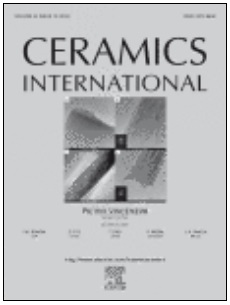The structural and mechanical properties of NbN and Nb-Si-N films have been investigated both experimentally and theoretically, in their as-deposited and annealed states. The films were deposited using magnetron sputtering at substrate bias (UB) between 0 and −70 V. While NbN films were found to crystallize in the cubic δ-NbN structure, Nb-Si-N films with Si content of 11–13 at% consisted of a two-phases nanocomposite structure where δ-NbN nanocrystals were embedded in SiNx amorphous matrix. Films deposited at UB=0 V were highly (001)-textured. Application of substrate bias potential led to a depletion of light atoms, and caused a grain size refinement concomitantly with the increase of (111) preferred orientations in both films. The maximum hardness was 28 GPa and 32 GPa for NbN and Nb-Si-N films, respectively. NbN and Nb-Si-N films deposited at UB=−70 V exhibited compressive stress of −3 and −4 GPa, respectively. After vacuum annealing, a decrease in the stress-free lattice parameter was observed for both films, and attributed to alteration of film composition. To obtain insights on interface properties and related mechanical and thermal stability of Nb-Si-N nanocomposite films, first principles molecular dynamics simulations of NbN/SiNx heterostructures with different structures (cubic and hexagonal) and atomic configurations were carried out. All the hexagonal heterostructures were found to be dynamically stable and weakly dependent on temperature. Calculation of the tensile strain-stress curves showed that the values of ideal tensile strength for the δ-NbN(111)- and ε-NbN(001)-based heterostructures with coherent interfaces and Si3N4–like Si2N3 interfaces were the highest with values in the range 36–65 GPa, but lower than corresponding values of bulk NbN compound. This suggests that hardness enhancement is likely due to inhibition of dislocation glide at the grain boundary rather than interfacial strengthening due to Si-N chemical bonding
